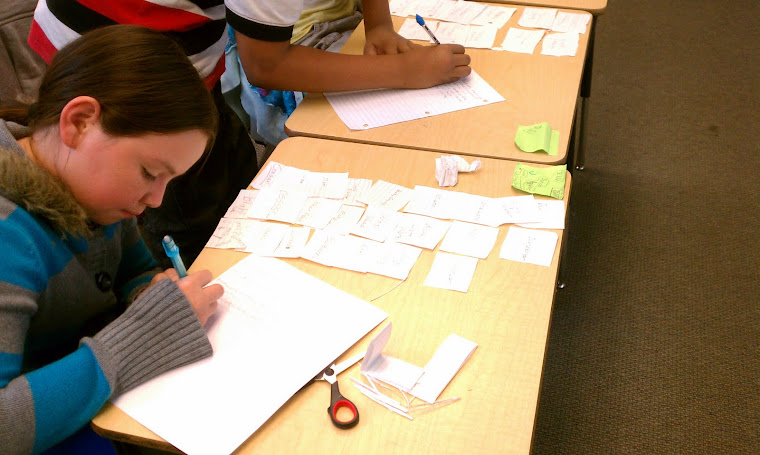Idioms are one type of figurative language. Upper grade students are expected to know how to use and understand figurative language in text and poetry. Often, figurative language is tested in poetry form, so watch out!
Some of the sayings or proverbs(idioms) can be very confusing for young students if they are not taught.
You may know a few like:
You're skating on thin ice.
Meaning: You are about to get in trouble.
The early bird gets the worm.
Meaning: The one who starts early will be more productive.
It's raining cats and dogs.
Meaning: It's raining really hard.
Here are some great links learning about idioms. Check them out!
Idioms
More Idioms
Even More Idioms
Submit an idiom to the blog. Write the idiom, say what it should mean, and what it actually means on your email.
Remember to write your name on your email! Have fun!
Summary Writing

"Student uses strategies to write a summary during writing time."
Tuesday, October 11, 2011
Summarize Anything!
All fourth and fifth grade students are working on summary writing in the first trimester. It is our goal for eighty percent of our students to be proficient in writing a summary. Students can summarize anything. For example, they can summarize a story, a book they have read, an article in the newspaper....Anything!
Students are using the summary plan document along with a writing effective summaries sheet. Make sure that you have a large supply of post it notes on hand to practice at home.
Summary Worksheet Example
Students are using the summary plan document along with a writing effective summaries sheet. Make sure that you have a large supply of post it notes on hand to practice at home.
Summary Worksheet Example
Wednesday, September 21, 2011
Fourth and Fifth Graders Write Summaries!
Summary Writing:
Students are learning about summary writing! Students are identifying the main idea and writing details to complete their summaries.
We use small post it notes in order to summarize the most important details.
Here' how it works:
1. Quickly scan the selection and determine how many paragraphs are in the reading. If there are 6 paragraphs, then take six post it notes.
2. Read one paragraph at a time. Write the most important detail from each paragraph.
3. Get six more post it notes.
4. Reread each paragraph (one at a time again!) and write another important detail on each post it note.
5. Put your post it notes in order.
6. Arrange the post it notes on the summary plan. (See copy of the summary plan.)
7. Now write the information from the post it notes on summary plan marked FACTS. Make sure you have written in complete sentences.
Writing the topic sentence:
You will need the following sheet: Writing Effective Summaries and the Summary Plan. (download the sheets)
1. Identify what you are summarizing about: Is it a book, magazine, article, story?
The book, Shiloh
2. Find a verb: tells, describes, explains,
Now the sentence looks like this: The book, Shiloh describes
3. Finish with the main idea: a boy who rescues an abused dog from his cruel owner.
Here is the completed topic sentence: The book, Shiloh describes a boy who rescues an abused dog from his cruel owner.
Let's practice:
Students are learning about summary writing! Students are identifying the main idea and writing details to complete their summaries.
We use small post it notes in order to summarize the most important details.
Here' how it works:
1. Quickly scan the selection and determine how many paragraphs are in the reading. If there are 6 paragraphs, then take six post it notes.
2. Read one paragraph at a time. Write the most important detail from each paragraph.
3. Get six more post it notes.
4. Reread each paragraph (one at a time again!) and write another important detail on each post it note.
5. Put your post it notes in order.
6. Arrange the post it notes on the summary plan. (See copy of the summary plan.)
7. Now write the information from the post it notes on summary plan marked FACTS. Make sure you have written in complete sentences.
Writing the topic sentence:
You will need the following sheet: Writing Effective Summaries and the Summary Plan. (download the sheets)
1. Identify what you are summarizing about: Is it a book, magazine, article, story?
The book, Shiloh
2. Find a verb: tells, describes, explains,
Now the sentence looks like this: The book, Shiloh describes
3. Finish with the main idea: a boy who rescues an abused dog from his cruel owner.
Here is the completed topic sentence: The book, Shiloh describes a boy who rescues an abused dog from his cruel owner.
Let's practice:
Subscribe to:
Posts (Atom)